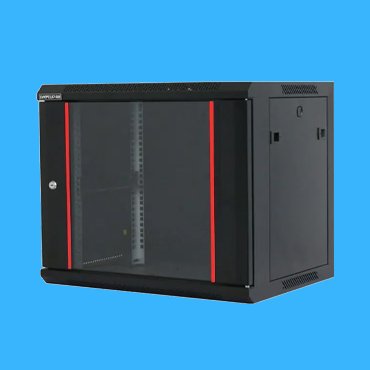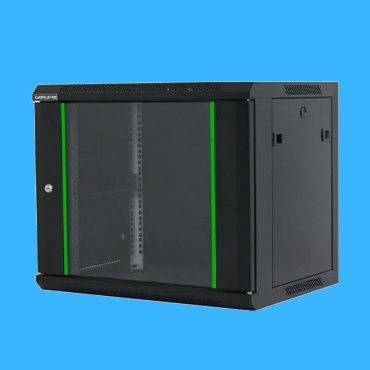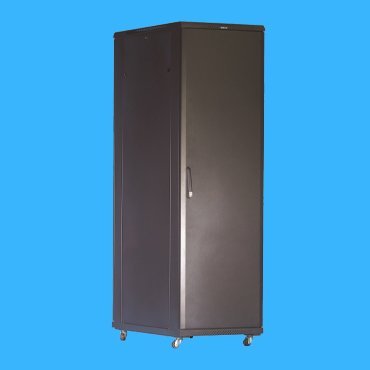Network Cabinet
A network cabinet is a complete mental box that used to house various networking equipment, such as routers, switches, patch panels, and other electronic devices and mechanical parts. They are available in a range of sizes from 2U to 42U to accommodate different types of applications for your network.
PowerTel & its associated factory are devoted to making a superior network cabinet to enhance the reliability and safety of its operation, decrease maintenance costs, increase usage effiency, and extend its service life. Your needs are the source of our design, and We are happy to reduce your costs by designing a right type of network cabinet and a pacakge supply of network products, like patch panel, patch cord cable, network switch, cable managers etc.

Network Cabinet
Comply with ANSI/EIA RS-310-D, IEC297-2, DIN41494 PART1 & 7
Silanization treatment and electrostatic spray molding
Silane treatment for surface has been proven to be more advantageous than phosphating treatment technology. It increases coating adhesion, extends corrosion resistance duration, and does not contain phosphorus, thus complying with your local environmental regulations.


High Quality Network Cabinet
Scientific management, optimal design, state-of-art manufacturing facilities, Well-trained technical workers, and efficient productionlines ensure the excellent quality of our network cabinet, and can provide you with high-quality products at lowest price.
Custom Design to your network cabinet
Your needs are the source of our design;We are dedicated to providing a custom design of network cabinet to accomodate your telecommunication equipments, to enhance the reliability and safety of its operation, decrease maintenance costs, increase usage effiency, and extend its service life.

Related Products
In the modern society of fast development of information technology , network cabinets have been an increasingly important equipment for data centers, communication rooms for a telecommunication operator, network center for a private company etc.
Basic configuration of a Network Cabinet
A network cabinet is used for installing and managing network devices such as servers, switches, routers, storage devices, etc. It usually is made up of several panels and a solid frame, several doors, and has a good ventilation & heat dissipation system, and electromagnetic shielding performance.
The size of network cabinets is usually measured in “U” (unit height), and normally it is available in 42U, 45U, 48U with a width of 19 inches. The higher in the height, the larger the capacity of the cabinet and the more devices it can be assembled.
The Main functions of Network Cabinets
Equipment management and maintenance; Heat dissipation and ventilation caused by some active communication equipment.;Electromagnetic shielding and safet.
Following points you need to take care when selecting network cabinets.
- Size and Capacity
Choose a proper cabinet height and depth based on the housed telecommunication devices.
- Heat dissipation performance
For a network cabinet with a high-density devices, it need to be with efficient ventilation design and optional fan modules should be selected.
- it is easy for maintainance work and good for Cable management












